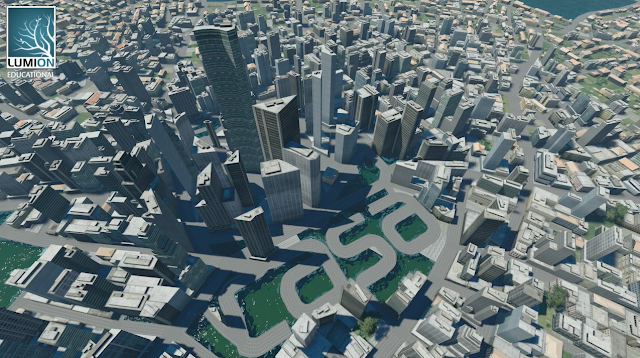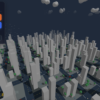
The best way to learn new modelling software is to step away from complex data and take a side look at its capabilities. We have used this approach to run through the various features of CityEngine, producing a series of movies based around the logo of the Centre for Advanced Spatial Analysis, here at University College London.
 First up we integrated the CASA logo into the cityscape by manually tracing the logo and building a network around it. Via an import into iMovie the result is a playful fly around the logo:
First up we integrated the CASA logo into the cityscape by manually tracing the logo and building a network around it. Via an import into iMovie the result is a playful fly around the logo:
Finally, we used an alpha channel on the logo, allowing us to lower the outline onto the cityscape:
The combination of Adobe Illustrator, ESRI CityEngine, AutoDesk 3DMax and finally Lumion make for a rapid way to create unique cityscapes. The next steps are to integrate actual data…..





